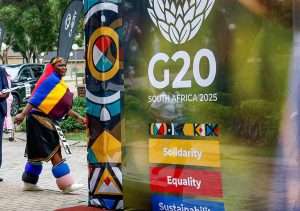Libya’s economic growth forecasts are optimist, says new report

The Arab Monetary Fund’s Economic Outlook report, released this week, has forecasted Libya’s economy to expand by 14.3% this year, which would make it one of the fastest growth rates in the region, according to the Libyan Express on August 13th.
The Fund has stated that growth rates for Libya depend on improvements in security, governance, and investor confidence. They have highlighted that political instability and weak institutional capacity are significant obstacles to deep and lasting reforms.
The struggle in carrying out elections, a reflection of the deep political divides in Libya, could therefore be yet another obstacle for economic growth. On August 11th the High National Elections Commission reported that the technical and logistical preparations have been made to carry out the scheduled local elections, but a lack of electoral law and political agreement are delaying them.
At the moment, Libya’s growth is forecasted to slow to 5.9% in 2026.
The report highlighted that the positive forecast is due to Libyan authorities introducing gradual economic measures aimed at improving living standards and strengthening the economy, and Libya’s reliance on the oil and gas sector which generates more than 95% of the state’s revenues.
Libya has the largest oil reserves of any African country at 48.36 billion barrels, a figure unchanged since 2013. The nation also produces an enormous amount of oil.
On August 8th it was reported that the Sirte Oil Company, operating the the state owned National Oil Company, reached its highest levels of daily crude oil production in 20 years.
The Arab Monetary Fund’s report credits and reflects the achievement of the National Oil Company in raising daily crude oil output up to more than 1.4 million barrels by the end of 2024.
Inflation in Libya has also stayed low compared to the regional standard- in 2023 it was at 2.4% and in 2024 dropped to around 2.1%, which the Fund attributes to the stable exchange rate of the Libyan currency, the dinar, against the United States dollar, helping to contain price pressures.
The Fund is forecasting inflation to drop again to 1.8% in 2025 and to rise to 1.9% in 2026.
Forecasts made by the Arab Monetary Fund for 2025 and 2026 remain contingent on regional stability and global trade. The United States new tariffs could indirectly affect Libya’s growth by weakening demand.
Libyan Express/Maghrebi
Want to chase the pulse of North Africa?
Subscribe to receive our FREE weekly PDF magazine












